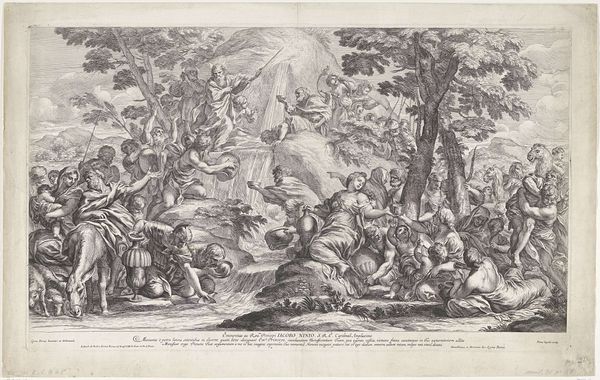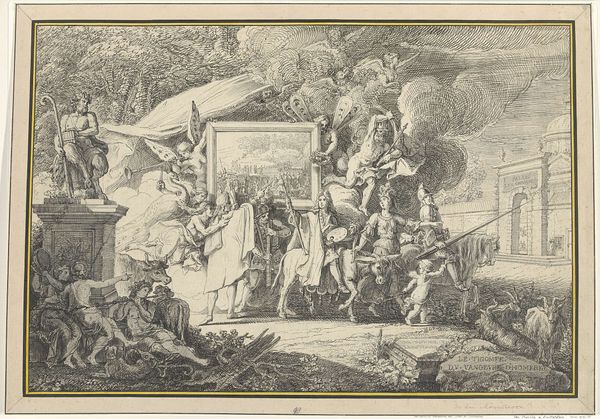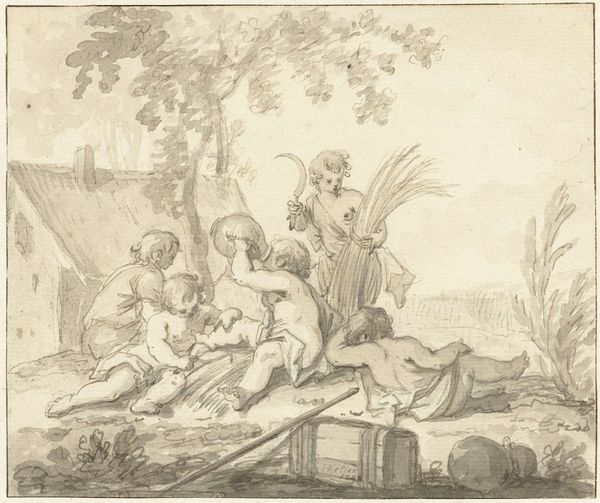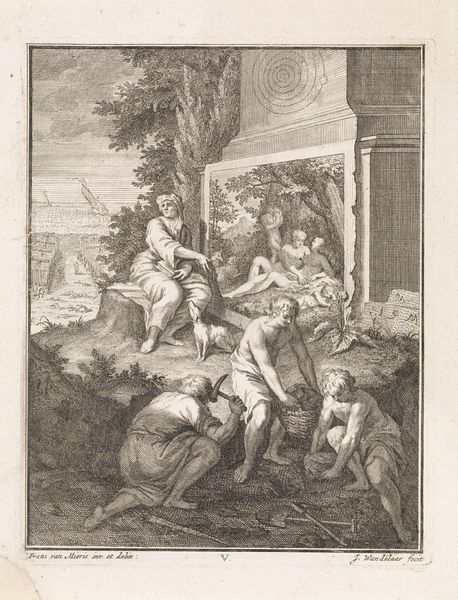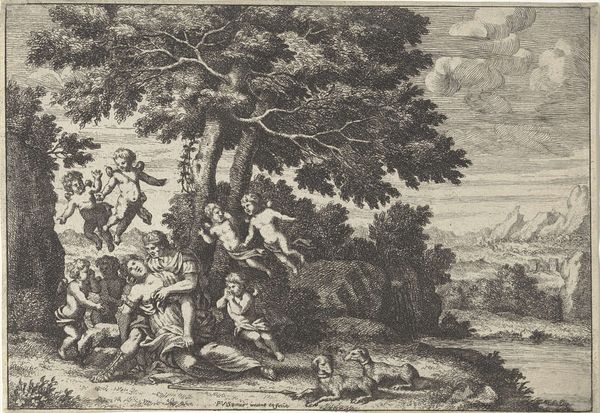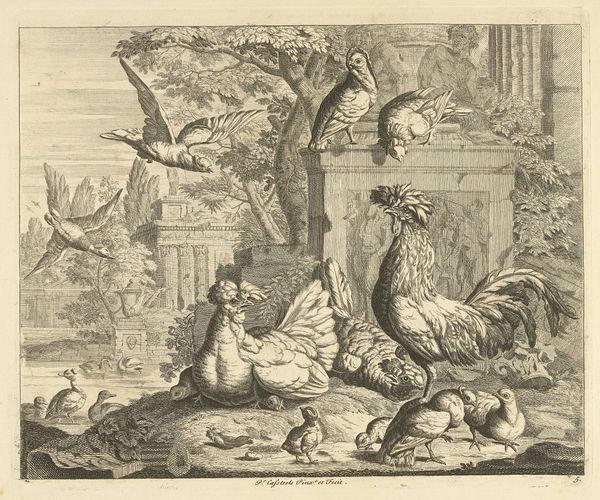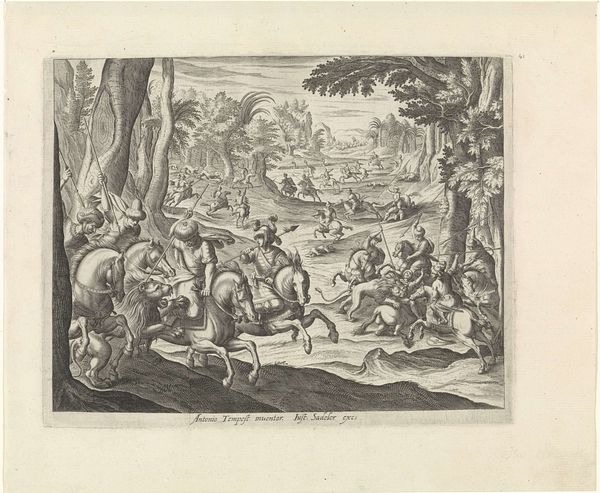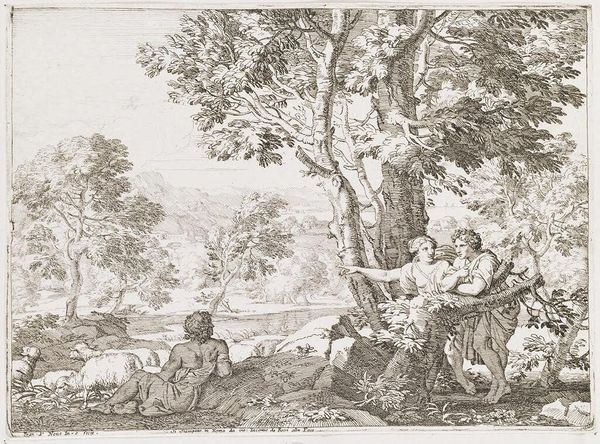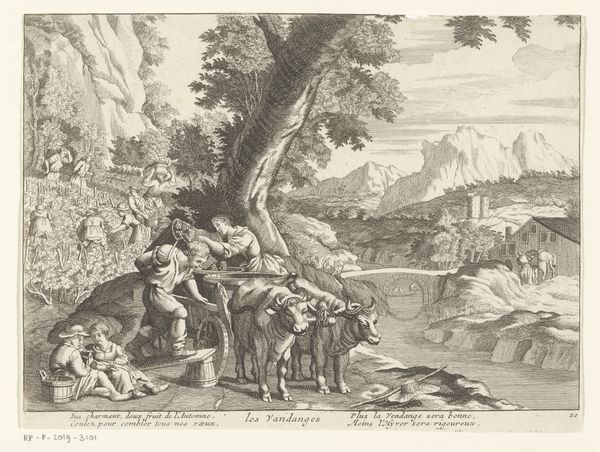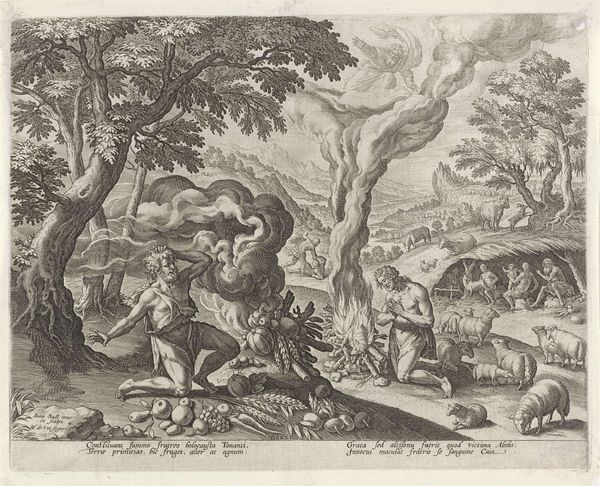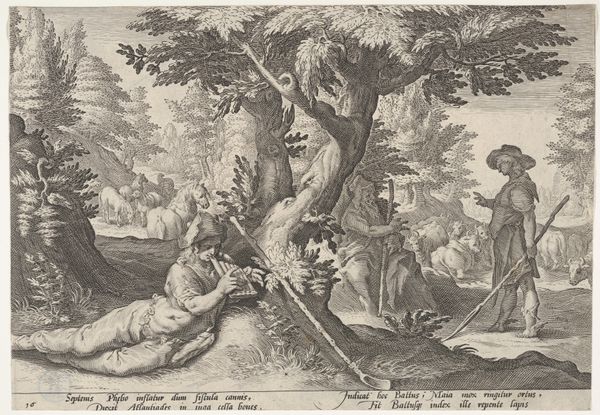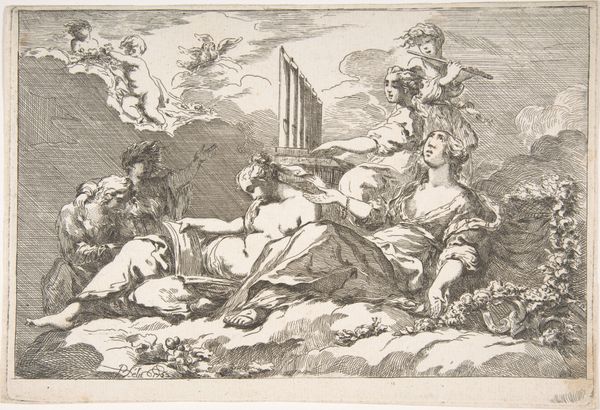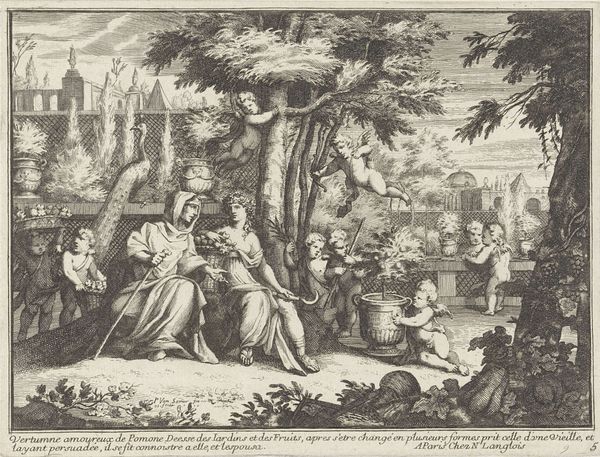
print, engraving
#
baroque
# print
#
landscape
#
figuration
#
line
#
history-painting
#
engraving
Dimensions: height 214 mm, width 265 mm
Copyright: Rijks Museum: Open Domain
Curator: Welcome. The engraving before us, dating from before 1700, is attributed to Jan van Orley. It’s titled "Christus geneest twee bezetenen," or Christ healing two demoniacs. Editor: Immediately, I’m struck by the violence and chaos depicted in the print. It feels quite baroque with all the dynamic energy. There's such tension embedded in the lines and the tonal gradations despite it only being in monochrome. Curator: Indeed. The composition adheres to a dynamic, almost theatrical baroque sensibility. Note how van Orley orchestrates the human figures in relation to the classical architectural elements—the columns, the vase. The careful balance. Also, observe the sharp lines and densely hatched areas that define form and texture. Editor: For me, the engraving raises difficult questions about how mental illness was perceived and portrayed during the Baroque era, framing "madness" as demonic possession, thereby normalizing oppressive structures and discrediting any voices speaking out against such discrimination. Look at the two figures at the front left, one in distress and the other apparently turning away, as though aversion is the correct reaction. It says so much about how people who were deemed different were segregated from society. Curator: And how the landscape becomes more than just background. Observe how the landscape recedes into the distance—leading the eye, note the contrast between the controlled lines defining the architecture in the foreground and the looser strokes evoking the wilderness. This contrast mirrors the very theme of order over chaos depicted within the central narrative. Editor: Yet, consider this from an intersectional perspective: Whose order? Whose chaos? Such binaries erase the voices of the marginalized, creating systems of oppression. This imagery reinforced those stereotypes for generations to come. Curator: A persuasive argument, certainly. I remain captivated by the technical prowess, the exquisite detail achieved through meticulous engraving. But these social and political dimensions you highlight grant an alternative way to perceive van Orley’s art. Editor: The act of looking itself is a choice. Deciding what to see and whose narrative gains prominence. These historical artworks continue to live today. And perhaps these narratives continue too, informing biases about mental illness today. So, looking at "Christus geneest twee bezetenen," through the perspective of the present challenges our current beliefs, urging greater empathy for all who suffer and the world we can cultivate to bring equity.
Comments
No comments
Be the first to comment and join the conversation on the ultimate creative platform.
